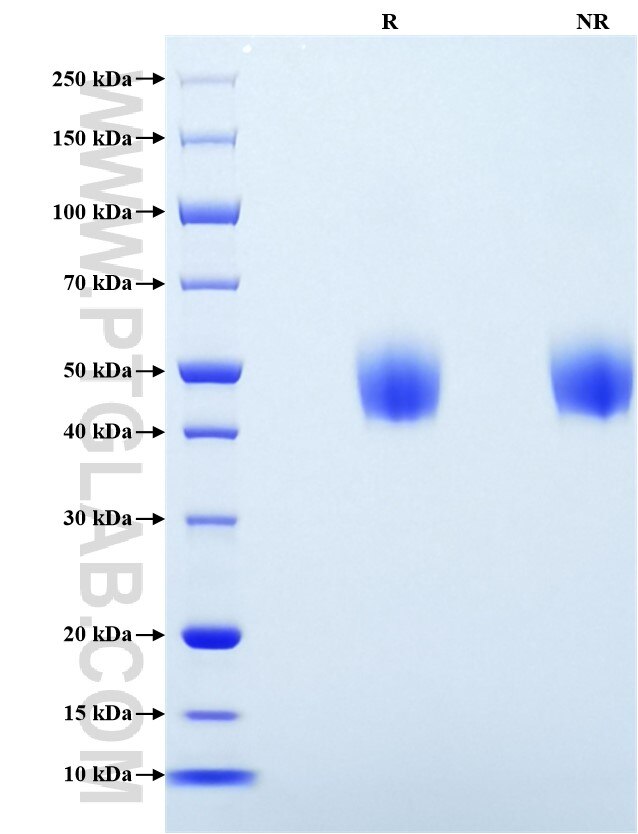Recombinant Mouse CD14 protein (His Tag)
Species
Mouse
Purity
>90 %, SDS-PAGE
Tag
His Tag
Activity
not tested
Cat no : Eg0847
Validation Data Gallery
Product Information
| Purity | >90 %, SDS-PAGE |
| Endotoxin | <0.1 EU/μg protein, LAL method |
| Activity |
Not tested |
| Expression | HEK293-derived Mouse CD14 protein Ser16-Pro345 (Accession# P10810) with a His tag at the C-terminus. |
| GeneID | 12475 |
| Accession | P10810 |
| PredictedSize | 36.5 kDa |
| SDS-PAGE | 42-55 kDa, reducing (R) conditions |
| Formulation | Lyophilized from 0.22 μm filtered solution in PBS, pH 7.4. Normally 5% trehalose and 5% mannitol are added as protectants before lyophilization. |
| Reconstitution | Briefly centrifuge the tube before opening. Reconstitute at 0.1-0.5 mg/mL in sterile water. |
| Storage Conditions |
It is recommended that the protein be aliquoted for optimal storage. Avoid repeated freeze-thaw cycles.
|
| Shipping | The product is shipped at ambient temperature. Upon receipt, store it immediately at the recommended temperature. |
Background
CD14 is a 50-55 kDa glycosylphosphatidylinositol-anchored glycoprotein. CD14 is preferentially expressed on monocytes and macrophages. CD14 acts as a co-receptor (along with TLR4 and MD-2) for bacterial liposaccharides (LPS). It plays a major role in the inflammatory response of monocytes to LPS. Soluble forms of CD14 (sCD14) have been detected in cell culture supernatants and in human serum and urine, either shedded from the cell surface or released from intracellular pools. Increased release of sCD14 from monocytes is observed after stimulation with various agents, and sCD14 may therefore be a marker for activation of monocytes/macrophages.
References:
1.W A Nockher, et al. (1994) Clin Exp Immunol. 98(3):369-74. 2.A Haziot, et al. (1988) J Immunol. 141(2):547-52. 3.E Lien, et al. (1998) Blood. 92(6):2084-92. 4.E A Kurt-Jones, et al. (2000) Nat Immunol. 1(5):398-401.

